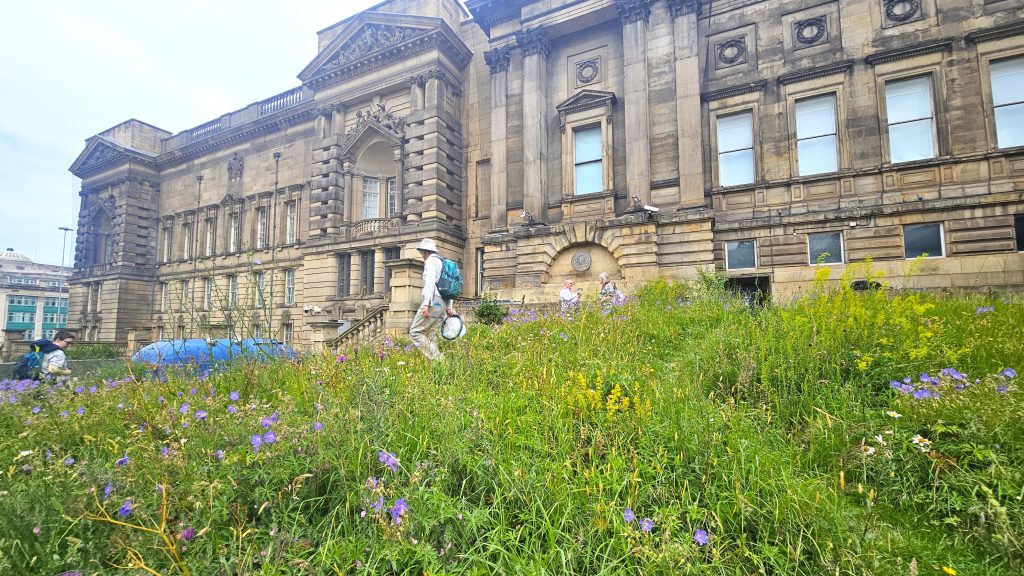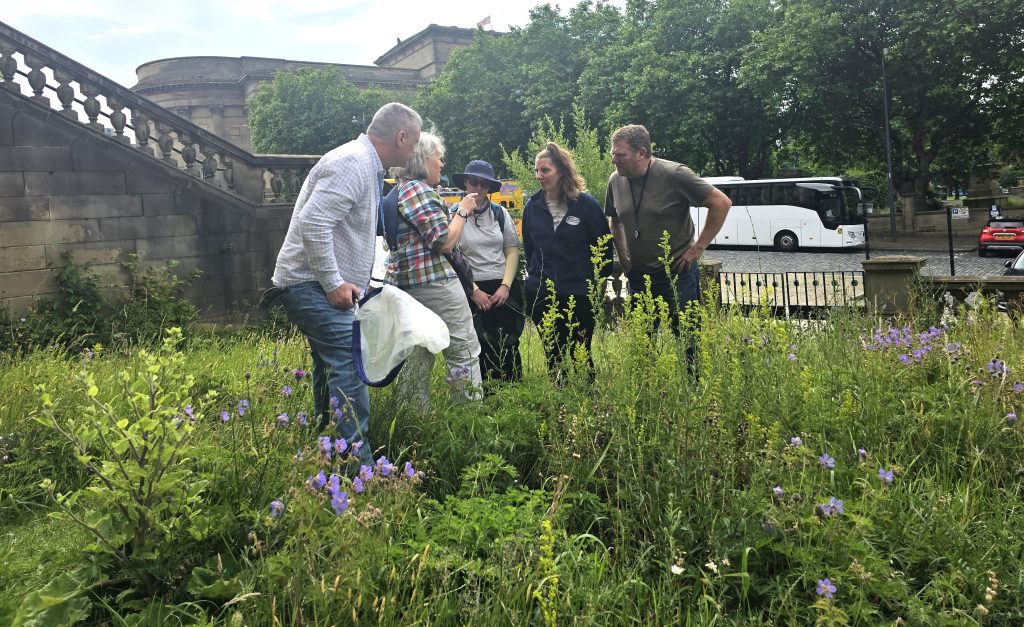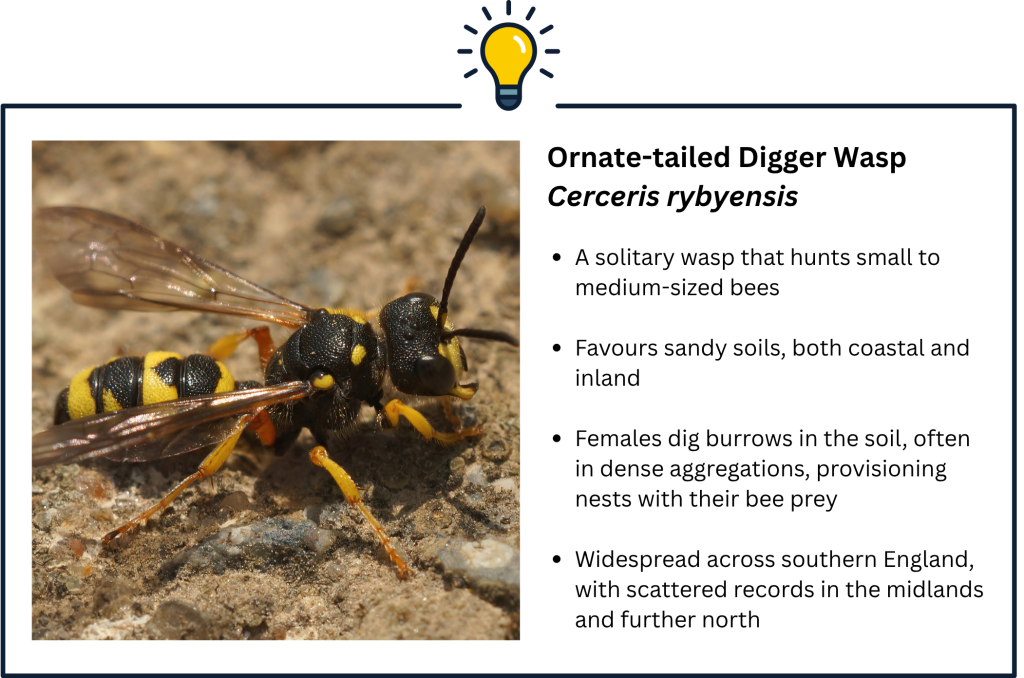

The City Wildflower Meadow at Liverpool’s World Museum has become a vibrant haven for pollinators in the heart of the city. Thanks to casual surveys conducted by the Cheshire Bee Group in 2023 and 2025, we now have a snapshot of the bee and wasp species thriving in this urban oasis.
A Meadow with a Mission
Established to support biodiversity and connect people with nature, World Museum’s wildflower meadow is a living example of how even small green spaces can make a big impact. With native wildflowers blooming throughout the spring and summer, the meadow offers vital food and nesting resources for a wide range of insects.
Survey Highlights: Bees and Wasps of the Meadow
Across two days of casual surveying, the Cheshire Bee Group recorded 29 species of bees and wasps. These include both common garden visitors and more specialist species, showcasing the meadow’s ecological richness.
Species Recorded
Bumblebees:
Garden Bumblebee Bombus hortorum
Tree Bumblebee Bombus hypnorum
Red-tailed Bumblebee Bombus lapidarius
Buff/White-tailed Bumblebee Bombus lucorum/terrestris
Common Carder Bumblebee Bombus pascuorum
Early Bumblebee Bombus pratorum
Southern Cuckoo Bumblebee Bombus vestalis

Solitary Bees:
Gwynne’s Mining Bee Andrena bicolor,
Hairy-footed Flower Bee Anthophora plumipes,
Davies’ Colletes Colletes daviesanus
Hairy Yellow-face Bee Hylaeus hyalinatus
Large Yellow-face Bee Hylaeus signatus
Common Furrow Bee Lasioglossum calceatum
Smeathman’s Furrow Bee Lasioglossum smeathmanellum
Patchwork Leafcutter Bee Megachile centuncularis
Willughby’s Leafcutter Bee Megachile willughbiella
Red Mason Bee Osmia bicornis
Blue Mason Bee Osmia caerulescens
Wool Carder Bee Anthidium manicatum

Wasps:
Wall Mason Wasp Ancistrocerus parietum
Ornate-tailed Digger Wasp Cerceris rybyensis
Slender Digger Wasp Crossocerus elongatulus
Bedeguar Gall Wasp Diplolepis rosae
White-spotted Sapyga Sapyga quinquepunctata
These species represent a mix of social and solitary lifestyles, with some nesting underground, others in hollow stems or cavities, and a few parasitic species that rely on other insects for reproduction.
Why It Matters
Urban meadows like this one are more than just pretty patches of flowers – they are lifelines for pollinators facing habitat loss. The diversity found here reflects the success of the meadow in supporting a wide range of insect species critical to both wild ecosystems and food production.
Looking Ahead
The Cheshire Bee Group’s surveys provide valuable baseline data that can inform future management of the meadow. Continued monitoring will help track changes in species presence and abundance, offering insights into how urban habitats can be managed to support biodiversity.
Founded in 2019, Cheshire Bee Group promotes bee recording across Cheshire, boosts records from under-surveyed sites, and builds ID skills through shared learning and seasonal field trips. Join their mailing list here.







